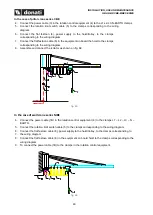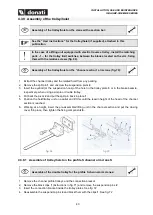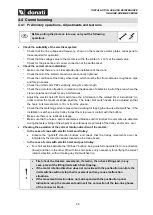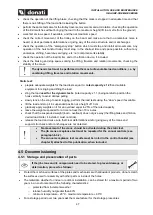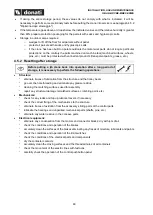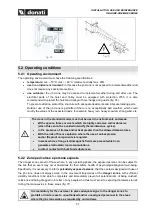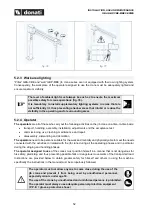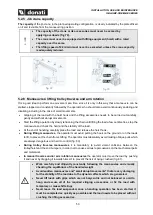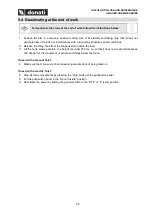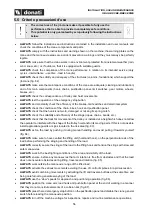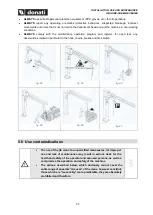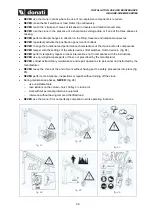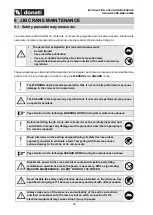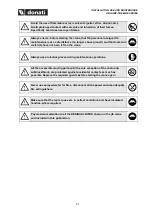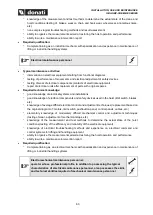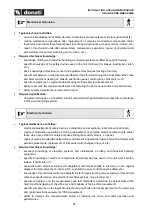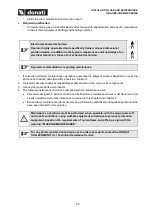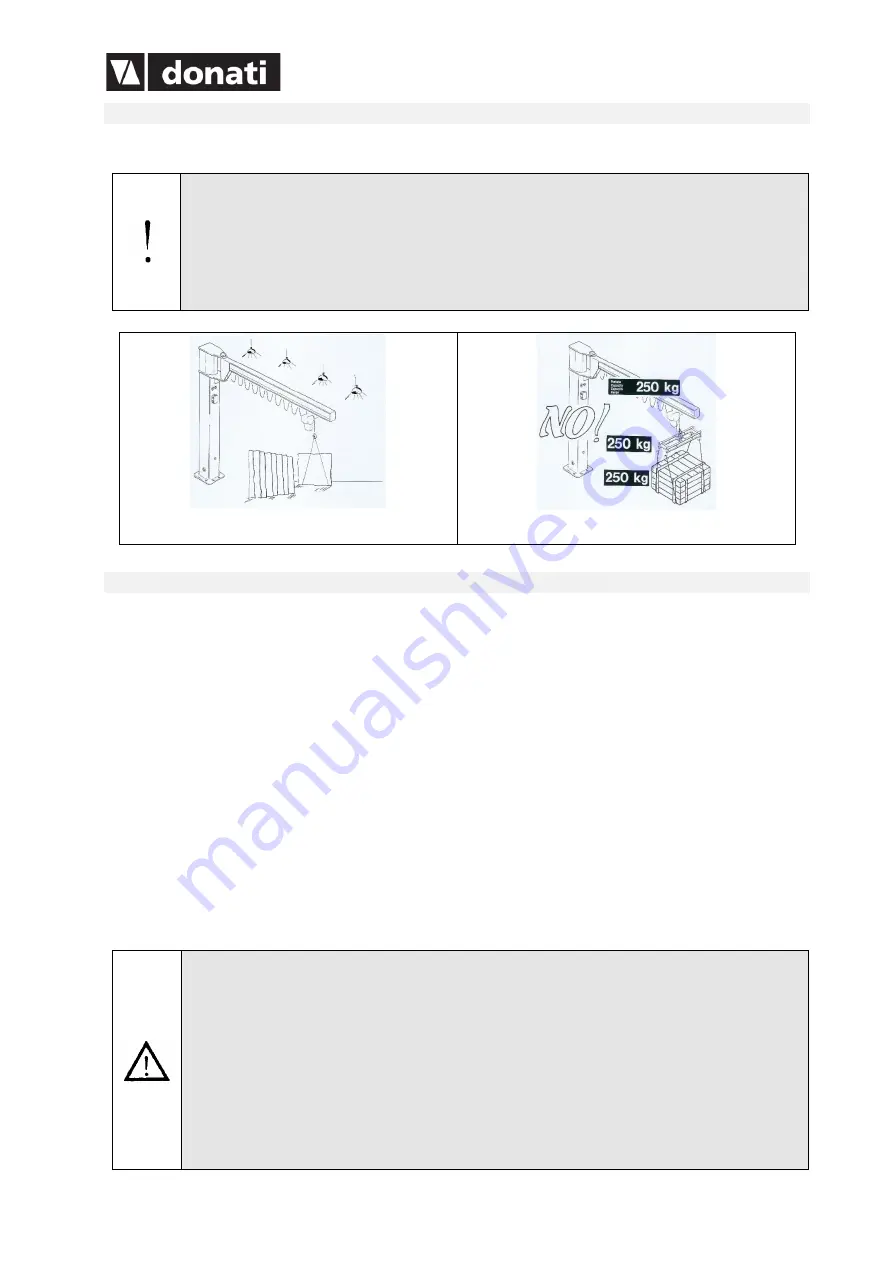
INSTALLATION, USE AND MAINTENANCE
GBA-GBP-CBE-MBE SERIES
53
5.2.5 Jib crane capacity
The capacity
of the jib crane, in the planned operating configuration, is clearly indicated by the plate affixed
on it and is visible from the manoeuvring position.
•
The capacity of the crane or its accessories must never be exceed by
applying overloads
•
The crane must never be equipped with lifting equipment (hoist) with a rated
capacity over the same.
•
The lifting speed of 24 m/min must never be exceeded, unless the crane capacity
is adequately reduced.
fig. 78
fig. 79
5.2.6 Manoeuvres: lifting, trolley traverse and arm rotation
It is a good idea to perform one movement at a time, since it is only in this way that a manoeuvre can be
started, stopped and constantly followed by the operator, who should also avoid continuously enabling and
disabling including in the case of small movements.
•
Gripping of the load with the hoist hook and the lifting accessories needs to be carried out carefully,
gently and without abrupt movements.
•
Start the lifting operation by slowly tensioning the chain until lifting the load a few centimetres, stop the
manoeuvre and check the hold and the stability of the load.
•
At the end of handling, carefully place the load and release the hoist hook,
•
During lifting manoeuvres,
the operator must avoid putting the hook on the ground or on the loads
to lift, to prevent the chain from shifting. The operator must absolutely avoid making oblique pulls which
are always dangerous and hard to control (fig. 80).
•
During trolley traverse manoeuvres
it is mandatory to avoid violent collisions between the
trolley/hoist and the end bumpers, in order not to cause serious repercussions on the mechanical parts
and metalwork.
•
In manual traverse and/or arm rotation manoeuvres
the operator must move the load by pushing
it and never by dragging it towards himself, to prevent the risk of being crushed (fig. 81).
•
Work carefully and diligently constantly following the manoeuvres and visually
checking the equilibrium of the handled weight
•
Avoid sudden manoeuvres and “small abrupt movements” that are very damaging
for the stability of the load due to the dynamic effects which are generated.
•
Never lift loads with grips which are not barycentric and not balanced or omit to
hang and secure all of the required slinging accessories or fix the load with
temporary or makeshift slings
•
Never leave the load suspended, once a handling operation has been started, it
must be completed as quickly as possible and the load needs to be placed without
crushing the lifting accessories.


